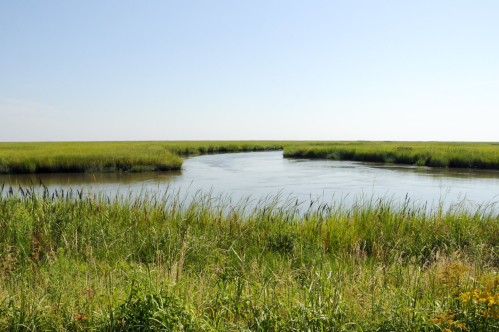Ohio has done a superb job of documenting its history; however, as the site of such growth and change over the years, some remarkable stories have been lost to time. In each city is a hidden history, but Cleveland in particular hosts many secrets. One happening that has been practically erased from public memory centers around the Cuyahoga River, and not in the way that its infamy may suggest.
Clevelanders love poking fun at other Clevelanders, and the East Side and West Side undeniably have a playful rivalry.
However, the city's residents did not always maintain an amicable relationship...
The tension began in 1836 when Cleveland constructed the first permanent bridge on the Cuyahoga River.
The Columbus Street Bridge was a 200-foot long bridge with a with a draw at the center, built for $15,000.
The bridge made its northern neighbor, a floating bridge jointly owned by Cleveland and Ohio City, fairly defunct.
This southerly route diverted traffic away from what is now West 25th Street and directed it through the Flats. At the time, Ohio City was its own entity (Cleveland would go on to annex it in 1854), and it struggled as Cleveland diverted its trade away from the commercial district.
Ohio City residents boycotted the bridge, and Cleveland responded by pettily removing their half of the old floating bridge.
The Columbus Street Bridge had opened in spring, and Ohio City struggled throughout the next few seasons. After Cleveland removed their half of the bridge that Ohio City had once so relied on, Clevelanders were surprised to be met with cries of, "Two Bridges or None!" Violence broke out, reaching its climactic display when an ineffective powder explosion was set off.
On October 31, 1836, an angry mob of Ohio City residents brandishing weapons in the forms of pitchforks, crowbars, axes, and guns rioted.
They were met by Cleveland's first mayor, John W. Willey, and a team of militiamen.
As with other riots of the early 1800s, the "Bridge War" became bloody, leaving three men seriously injured.
The County Sheriff put an end to the violence, and local courts ruled to open both bridges.
Of course, the original bridge no longer stands, but a Columbus Street Bridge of a different architectural style still exists in Cleveland.
The original bridge that sparked a local war was replaced by an iron bridge in 1870, and then the world's first double swing bridge replaced it. The current bridge, a steel lift bridge from 1940, is now a constant reminder of how easily a rivalry once became brutally violent.
Ohio City has become a beloved neighborhood of Cleveland, but the story of the former foes' battle is still hidden in our modern landscape.
Cleveland has a secret history that is absolutely fascinating to uncover. Do you know of a little-known historical event in The Land? Comment below to share your knowledge!
If You Only Have One Day to Visit This Small Town in Maine, Here’s Everything You Absolutely Can’t Miss

If You Only Have One Day to Visit This Small Town in Massachusetts, Here’s Everything You Absolutely Can’t Miss

If You Only Have One Day to Visit This Small Town in Maryland, Here’s Everything You Absolutely Can’t Miss

For more local history, check out the disastrous explosion of 1944 of the unforgettable fire of `1929.
Subscribe to our newsletter
Get the latest updates and news
Thank you for subscribing!





























